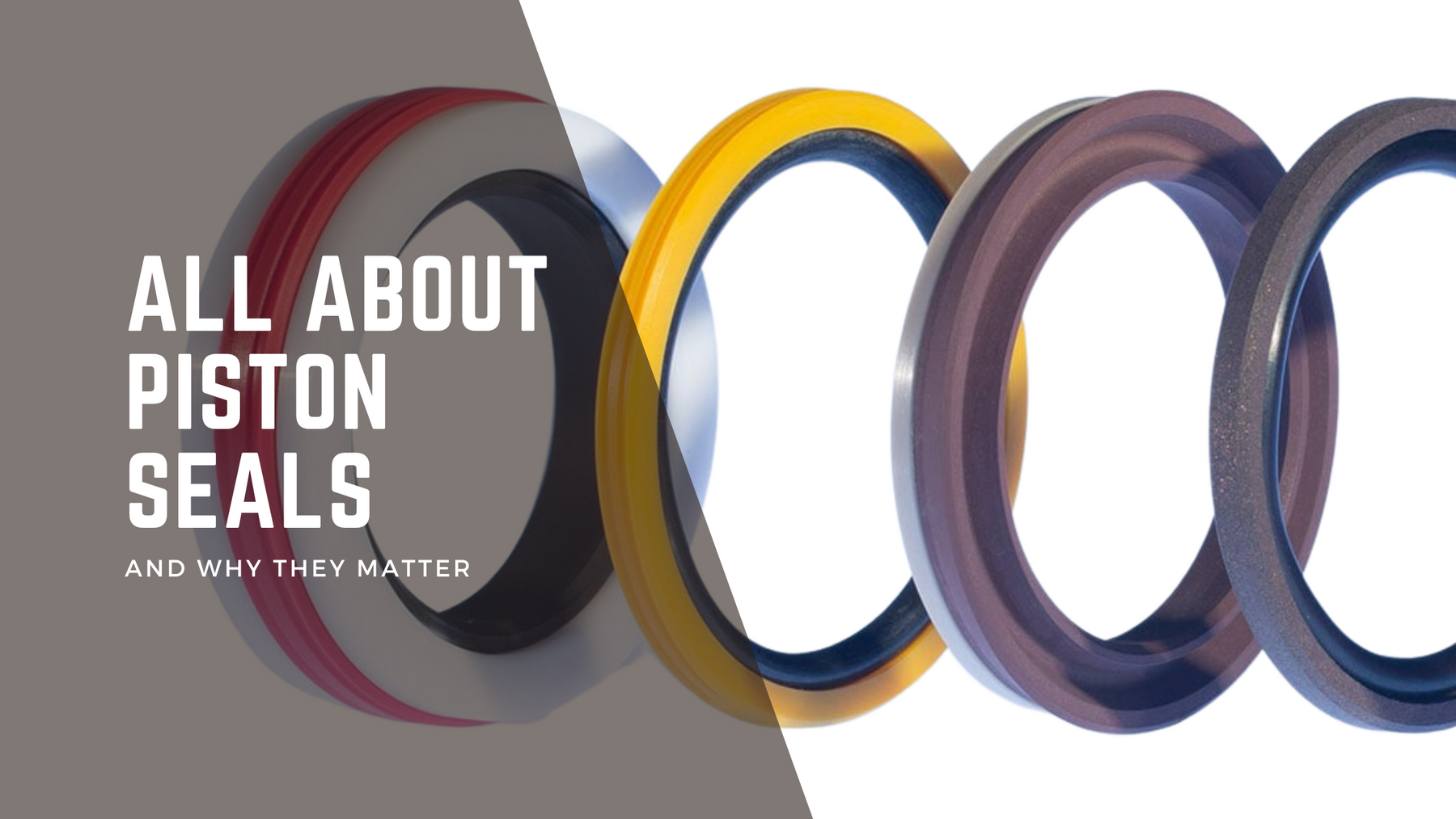Get your free account
877-873-8080

Hydraulic cylinders are indispensable components in a wide range of industrial applications, from construction machinery to manufacturing equipment. These cylinders are responsible for converting fluid pressure into mechanical force, powering movements that are crucial for various processes. At the heart of these hydraulic cylinders are piston seals, vital components that play a pivotal role in their functionality. In this blog post, we will delve into the world of piston seals, exploring how they work, why they fail, and the characteristics that define a high-quality seal.
Piston seals are specialized components that sit snugly between the piston and the cylinder bore. They serve as a barrier between the high-pressure hydraulic fluid on one side and the low-pressure side on the other. Their primary function is to prevent leakage of hydraulic fluid, ensuring efficient operation of the hydraulic cylinder by maintaining the pressure differential that drives the piston's movement.
How Piston Seals Work
Piston seals utilize a combination of materials and design features to achieve their sealing capabilities. They often consist of elastomers, which are flexible materials that can adapt to the varying pressures and movements within the cylinder. These elastomers are engineered to provide a secure seal against the cylinder bore while accommodating the dynamic motion of the piston.
Despite their importance, piston seals are subjected to a range of conditions that can lead to failure over time. Some of the common causes of piston seal failure include:
Fluid Contamination: Impurities and foreign particles in the hydraulic fluid can damage the seal's surface, leading to leaks and reduced efficiency.
High Temperatures: Extreme temperatures can cause the elastomer material to deteriorate, resulting in loss of sealing properties.
Excessive Pressure: Operating the hydraulic cylinder beyond its recommended pressure limits can lead to deformation and failure of the piston seal.
Abrasive Wear: Repeated friction between the seal and the cylinder bore can cause abrasive wear, compromising the seal's integrity.
Improper Installation: Incorrect installation or assembly can lead to uneven stress distribution on the seal, causing premature failure.
A high-quality piston seal can significantly enhance the performance and longevity of a hydraulic cylinder. Here are some key qualities to look for in a well-designed piston seal:
Material Compatibility: The seal's material should be chosen to withstand the specific conditions of the application, including temperature, pressure, and the type of hydraulic fluid used.
Sealing Efficiency: A good piston seal should provide reliable and consistent sealing, minimizing fluid leakage and maintaining pressure differentials.
Durability: The seal should be designed to resist wear, abrasion, and deformation over time, ensuring a longer operational lifespan.
Low Friction: Reduced friction between the seal and the cylinder bore translates to improved efficiency, smoother operation, and less energy consumption.
Flexibility: The seal should be able to accommodate the dynamic movements of the piston while maintaining a secure seal against the cylinder wall.
Ease of Installation: A well-designed seal should be easy to install correctly, minimizing the risk of improper assembly.
Proper maintenance and care are essential for extending the life of piston seals and hydraulic cylinders. Regular inspection, fluid monitoring, and adherence to manufacturer guidelines can prevent premature failures and costly downtime.
In conclusion, piston seals are critical components within hydraulic cylinders that enable their functionality by preventing fluid leakage. Understanding how piston seals work, why they fail, and the attributes of a good seal is crucial for maintaining efficient and reliable hydraulic systems. By choosing high-quality seals, adhering to maintenance protocols, and using hydraulic systems within their recommended parameters, industries can ensure optimal performance and minimize downtime.